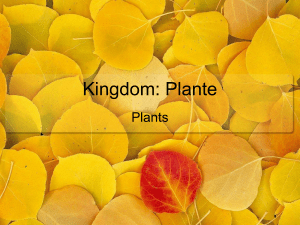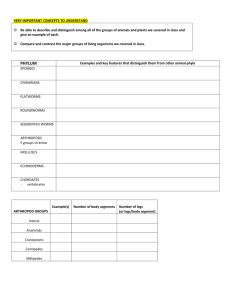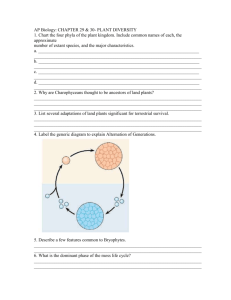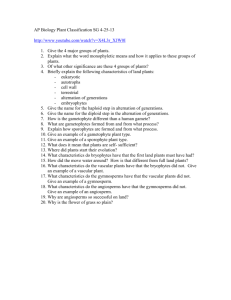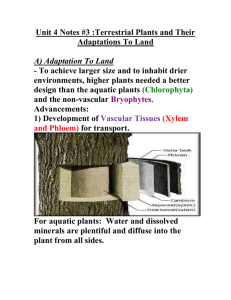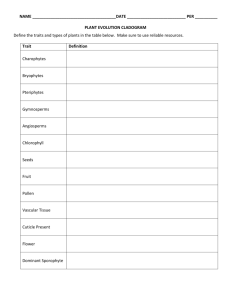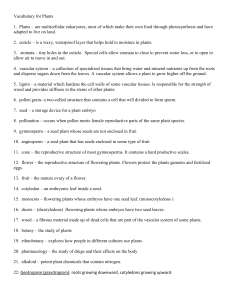How Are Plants Adapted for Life on Land
advertisement
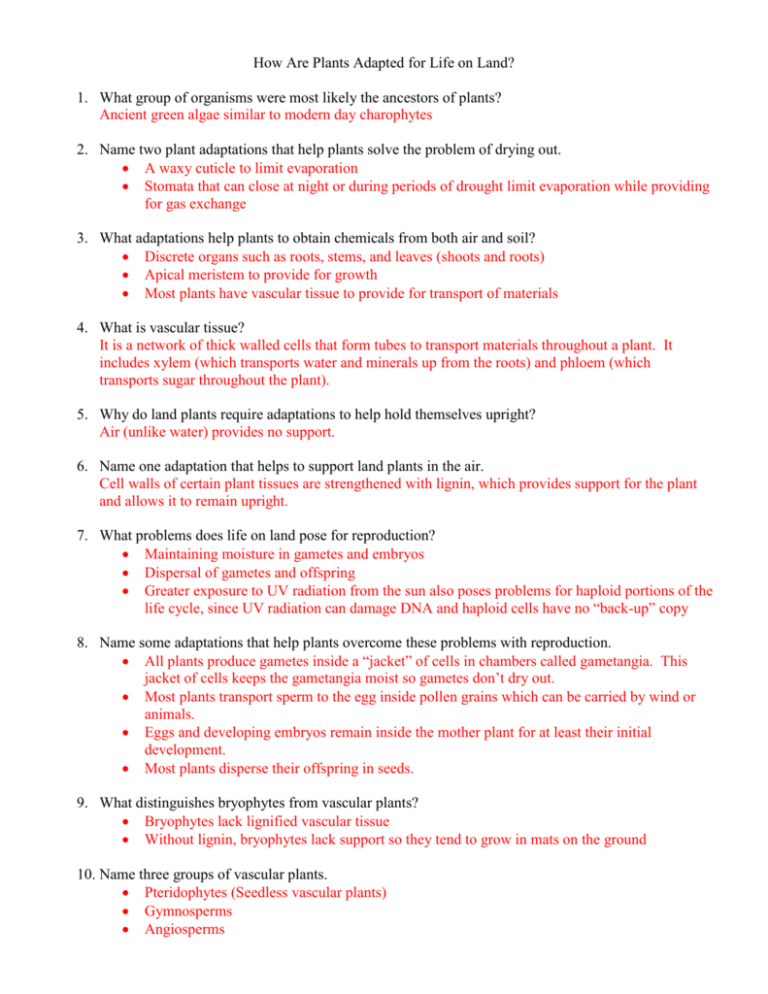
How Are Plants Adapted for Life on Land? 1. What group of organisms were most likely the ancestors of plants? Ancient green algae similar to modern day charophytes 2. Name two plant adaptations that help plants solve the problem of drying out. A waxy cuticle to limit evaporation Stomata that can close at night or during periods of drought limit evaporation while providing for gas exchange 3. What adaptations help plants to obtain chemicals from both air and soil? Discrete organs such as roots, stems, and leaves (shoots and roots) Apical meristem to provide for growth Most plants have vascular tissue to provide for transport of materials 4. What is vascular tissue? It is a network of thick walled cells that form tubes to transport materials throughout a plant. It includes xylem (which transports water and minerals up from the roots) and phloem (which transports sugar throughout the plant). 5. Why do land plants require adaptations to help hold themselves upright? Air (unlike water) provides no support. 6. Name one adaptation that helps to support land plants in the air. Cell walls of certain plant tissues are strengthened with lignin, which provides support for the plant and allows it to remain upright. 7. What problems does life on land pose for reproduction? Maintaining moisture in gametes and embryos Dispersal of gametes and offspring Greater exposure to UV radiation from the sun also poses problems for haploid portions of the life cycle, since UV radiation can damage DNA and haploid cells have no “back-up” copy 8. Name some adaptations that help plants overcome these problems with reproduction. All plants produce gametes inside a “jacket” of cells in chambers called gametangia. This jacket of cells keeps the gametangia moist so gametes don’t dry out. Most plants transport sperm to the egg inside pollen grains which can be carried by wind or animals. Eggs and developing embryos remain inside the mother plant for at least their initial development. Most plants disperse their offspring in seeds. 9. What distinguishes bryophytes from vascular plants? Bryophytes lack lignified vascular tissue Without lignin, bryophytes lack support so they tend to grow in mats on the ground 10. Name three groups of vascular plants. Pteridophytes (Seedless vascular plants) Gymnosperms Angiosperms 11. What is a seed? A seed consists of an embryo packaged with a food supply inside a protective seed coat. 12. Name two groups of seed plants. Gymnosperms Angiosperms 13. What two big advantages do seed plants have for reproduction on land? Seeds allow embryos to be dispersed widely on land. Seed plants produce pollen to transfer their sperm to the egg-producing parts of the plant. This allows the transfer of the sperm without a film of water. 14. Give an example of a gymnosperm. Many gymnosperms are conifers such as spruce, pines, and firs. They also include the ginkgo tree, cycads, and certain desert shrubs. 15. What is an angiosperm and what key advantages do angiosperms have for reproduction? Angiosperms are flowering plants. Their key advantages both involve attracting animals. Flowers attract animals, which help to transport pollen. The fruit that forms around angiosperm seeds often entices animals to assists in seed dispersal. 16. What is alternation of generations? Alternation of generations is the term used to describe the basic life cycle pattern of all plants. It involvers alternating between a multicellular diploid phase (called the sporophyte) and a multicellular haploid phase (called the gametophyte).
